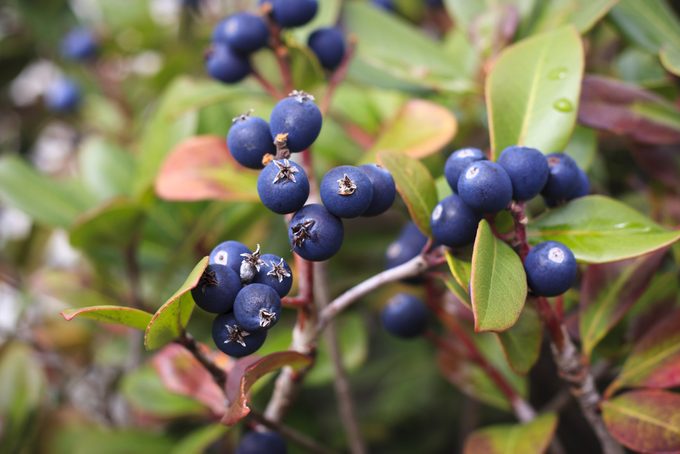Bilberry Extract Improves Eye Conditions and Circulation
Bomber pilots claim bilberry jam gave them night vision. Learn more about the benefits of bilberry, including how it helps eye and circulation issues

Source: The Amazing Healing Powers of Nature, Reader’s Digest
Eye conditions and circulation issues can be improved with bilberry extract
Bilberry (Vaccinium myrtillus) is used in jam and baking, but also has over a 1000-year-old legacy for its medicinal properties. It’the dried fruit and leaves, specifically’has been used in European herbal medicine for that long to treat diarrhea, mouth and throat irritations, coughs and tuberculosis. Bilberry-leaf tea is a widely used folk medicine for diabetes and for urinary tract infections, too. British World War II pilots reportedly credited their pinpoint accuracy during night bombing raids to the bilberry jam they’d enjoyed at teatime. Though never confirmed, the story highlights the potential health bonuses of this dainty fruit.
These days, bilberry is most commonly used medicinally as supplementary treatment for circulation issues, glaucoma, cataracts and retinopathy. It is this midnight-blue berry’s storehouse of powerful anthocyanins’chemical compounds with strong antioxidant and anti-inflammatory actions’that have been the subject of recent scientific research.
How it works
Anthocyanins give bilberries their deep blue-red tint. In the body, these compounds have been shown in numerous studies to improve circulation in the tiny blood vessels that deliver oxygen and nutrient-rich blood to individual cells. As antioxidants, they also protect cells from damage.
If you want to try bilberry extract
Fresh bilberries can be hard to find; frozen ones may be more readily available. Juices and extracts are sold in health food stores. Do not use bilberry in place of medications recommended by your doctor for eye or circulation conditions.
If you’d like to try bilberry as an add-on therapy, look for an extract standardized to contain 25 percent anthocyanins. Follow package directions for dosage.Talk with your doctor before using bilberry if you take medications for diabetes or to discourage clotting.
Modern research and studies on bilberry
In a widely cited Italian study published in 1989, 50 elderly people with early stage cataracts who took a combination of bilberry extract and vitamin E saw cataract progression slow by 97 percent.
Antioxidant power may explain the results of another Italian study from 1987, of 14 people with damage to their retinas and to tiny blood vessels in their eyes, due to diabetes or high blood pressure. They received bilberry extracts containing 115 milligrams of anthocyanins or a placebo daily. After a month, tests showed their retinas and the blood vessels had improved.
Glaucoma patients also experienced improvements in a small Korean study. Researchers gave anthocyanins from bilberry to 132 study volunteers at a dose of 60 milligrams twice daily for 2 years; another 103 received a gingko supplement and 97 others received neither. Eye tests showed that vision improved in those who took the anthocyanins; these volunteers also had fewer ‘weak spots’ in their field of vision. Lead researcher Seong Hee Shim noted that bilberry anthocyanins may help eyes by improving circulation, which could in turn help control dangerously high fluid pressure in the eye that in glaucoma can damage the optic nerve.
That circulation boost has body-wide benefits. In a 2010 lab study by Slovenia’s University of Ljubljana, a bilberry extract increased blood flow and helped stabilize heart rhythm after heart attack in rats. A 1995 lab study at Italy’s CNR Institute of Clinical Physiology found that bilberry extract restored blood flow to injured hamster tissue. Several Italian studies from the 1980s found that people with various circulation problems saw blood flow improve upon taking bilberry extract daily.
Meanwhile, bilberry anthocyanins improved symptoms in people with a bowel disease called ulcerative colitis, in a preliminary 2012 study at University Hospital Zurich, Switzerland.
Glaucoma patients experienced improvements in a small Korean study. Researchers gave anthocyanins from bilberry to 132 study volunteers at a dose of 60 milligrams twice daily for 2 years; another 103 received a gingko supplement and 97 others received neither. Eye tests showed that vision improved in those who took might still improve night vision in people with impaired eyesight due to diseases such as diabetes or glaucoma.
Night vision
If bilberry jam boosted the prowess of British bomber pilots in World War II, could it help the US Navy? In 2000, Eric R Muth of the Naval Aerospace Medical Research Laboratory in Pensacola, Florida, set out to answer that question after several European studies suggested that bilberry had night vision-sharpening powers. Fifteen Navy SEAL personnel took 160 milligrams of a bilberry extract 3 times a day for 3 weeks. But tests showed no improvements. And a 2004 review of bilberry studies by the Peninsula Medical School of the Universities of Exeter and Plymouth in England came to the same conclusion; however, researchers noted that further study is needed to find out if bilberry vessels in their eyes, due to diabetes or high blood pressure. They received bilberry extracts containing 115 milligrams of anthocyanins or a placebo daily. After a month, tests showed their retinas and the blood vessels had improved.




